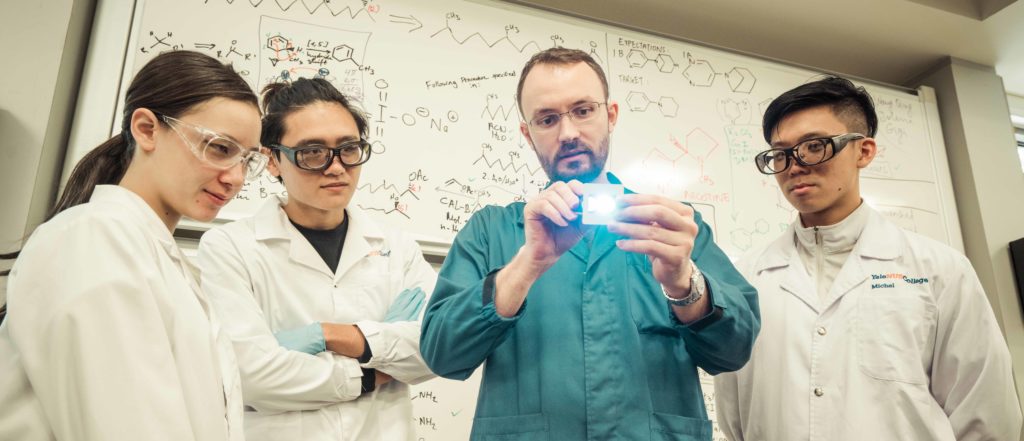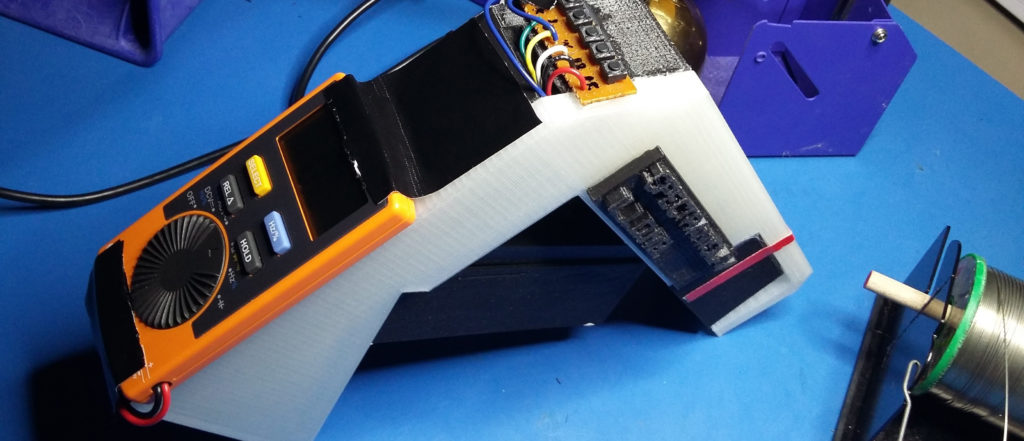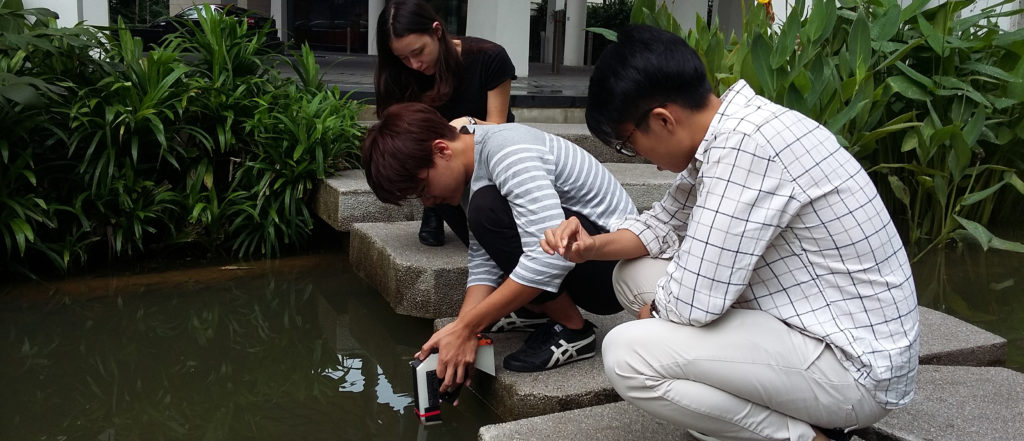Learn about scientific measurements and build your own instrument
 Assistant Professor Stanislav Presolski (in green) with his students in the Instrumental Analysis with Laboratory course. From left: Lucy Davis, Nod Bunnag and Isaac Lee. Image provided by the Centre for Teaching & Learning.
Assistant Professor Stanislav Presolski (in green) with his students in the Instrumental Analysis with Laboratory course. From left: Lucy Davis, Nod Bunnag and Isaac Lee. Image provided by the Centre for Teaching & Learning.
At Yale-NUS College, students can take an interdisciplinary science course named Instrumental Analysis with Laboratory, taught by Assistant Professor of Science (Chemistry) Stanislav Presolski. According to Asst Prof Presolski, the course seeks to help students understand how measurements are made with various scientific instruments across physics and chemistry.
Instrumental Analysis with Laboratory was inspired by a similar course that Asst Prof Presolski took as an undergraduate at Colby College, a liberal arts college in Maine, US. He thoroughly enjoyed that course as it allowed him to become more engaged with science. Asst Prof Presolski said that learning about scientific measurements helps students better understand sources of error and assess the accuracy of the data that they are presented with. “It also allows you to ‘hack’ existing equipment and use them in a non-standard way,” he added. Mobile phones, for example, can be ‘hacked’ in such unique ways. Asst Prof Presolski cited an example where a student developed a phone camera case that used ultraviolet (UV) light to illuminate traces of vitamin A. By using the phone camera to take and study a photograph, the concentration of vitamin A in a sample could be quantified.
In this course, students spent slightly more than the first half of the semester learning how to use a multitude of instruments in the College’s laboratories. They study how measurements are made, how machines are built physically, and how raw data becomes something interpretable. Asst Prof Presolski said, “This also involves some mathematics and mathematical treatment that is oftentimes not immediately obvious to the user. I want to reveal it so that students can actually do it better or know the tricks that create data that might ‘lie’ to them.”
The ‘fun part’ of the course comes in the last four to five weeks when students embark on a team project to build their own instrument. Asst Prof Presolski said, “Engineers usually say: if you think you understand something well, then go build it. That’s when you test yourself and see if you really understand.” His students use the on-campus Fabrication Studio to do everything from laser-cutting and 3-D printing to “arts-and-crafts”. The final product has to be operationally simple, cheap (less than $100), and measure a quantity that is valuable to society. And at the very least, it is expected to be accurate and precise.
In a recent iteration of the course, one team built a working spectrometer from scratch and tested the prototype at the College’s bio-filtration pond for the concentration of algae in the water – the spectrometer is capable of measuring how much of each wavelength of light was passing through its sensors. The students also made it portable, in the shape of a gun that can be easily hand-carried and dipped in water.

 Images provided by Asst Prof Stanislav Presolski.
Images provided by Asst Prof Stanislav Presolski.
For the most part, the final team project is an educational opportunity for students to attempt building an instrument and, in doing so, realise how different components come together. While these final products tend to be early-stage prototypes that are unlikely to be further developed, Asst Prof Presolski added, “But who is to say that something revolutionary cannot happen? It has been quite remarkable to see the different kinds of instruments made.”
Explaining the interdisciplinary nature of the course, Asst Prof Presolski said that while the course is listed under the Physical Sciences major, it includes the study of both physics and chemistry. Furthermore, students can apply the knowledge gained in the course to ecology and biology. The use of instruments is often essential in these fields, be it in measuring algae concentration – as with the spectrometer mentioned earlier – or in the detection of diseases like malaria. Isaac Lee (Class of 2019), who took the course in his junior year, said, “Instrumental Analysis is a very useful subject for me as a budding biologist. I learned about how we can probe matter by using different wavelengths of electromagnetic radiation, as well as some of the commonly used methods that analytical chemists use to study unknown compounds.”
Additionally, Asst Prof Presolski believes that the class will benefit from having people of different majors taking it. For example, he has had Life Sciences majors who used materials from the biology laboratory to create disposable gel electrodes for their project. He hopes that students familiar with digital application making, potentially Mathematical, Computational and Statistical Sciences (MCS) majors, would take this course in the future as he envisions that they will bring much value to the class. “The value of Yale-NUS as a college is bringing students together in a course like Instrumental Analysis with Laboratory which allows you to talk to people you will not naturally talk to, while having a specific goal that you can all tackle at a higher level and achieve something together. And I think that is valuable for a team.”
Looking at the positive feedback he has received from his students, Asst Prof Presolski said he is excited to continue offering the course for the foreseeable future. As he will be away on a sabbatical in this semester, a visiting professor will be teaching the course instead. Isaac spoke of the engagement and passion that Asst Prof Presolski brought to the classroom, “I highly recommend this course to other students who have a keen interest in understanding how we probe the elemental identity and structure of compounds.”





